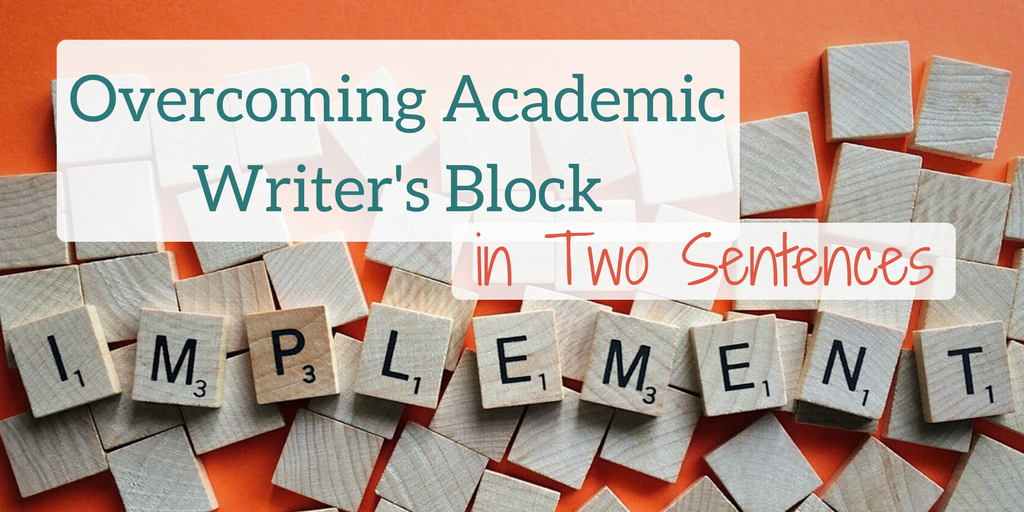When revising my book manuscript, one chapter stubbornly refused any and all revision efforts I threw at it. It wasn’t academic writer’s block per se, but I was still hopelessly stuck.
Usually when this happens, I do two things: revise (or completely rewrite my abstract) and reverse outline. This combo reminds me of where the essay is ultimately headed and exposes gaps in my argumentation which almost always gets me back on track enough to make useful headway for a while.
This chapter, though, refused. No matter how many times I re-abstracted and re-reverse outlined, the chapter just didn’t feel like it was working. Worse still, it felt flat. It had no spark. It captured none of the passion and enthusiasm that had initially drawn me to it.
And then, something clicked. The piece was not working because I was not thinking about my reader. I realized that just as I take great care to craft both content-based and actionable learning objectives for my students, I could articulate similar takeaways for my reader. Doing so challenged me to think beyond the lens of “argument” for my essay, and instead imagine how reading the essay would change the reader.
It took me a few iterations to refine the activity, but I now apply it to all pieces I write. It works for me because it challenges me to define, in specific terms, why someone who does not have to read my article should do so. It also reminds me that I, as the author, need to be intentional about foregrounding the essay’s takeaway(s).
The Two Sentence Method for Overcoming Academic Writer’s Block
On a sheet of paper complete these two bolded sentences. Use the examples as guidelines, and try to be as specific as possible.
Sentence #1: After reading this article/chapter you will better understand… (This is the content your reader will glean).
Some examples include: the theme of X in Y text; how Author A self-consciously grapples with her own exoticism; how Author B uses X literary device for Y purpose; how scholars’ readings of Z is limited and why taking into account idea C gives us a more nuanced picture; etc.
Sentence #2: So that you can…
Some examples include: extend the analyses I offer in this paper in partiuclar ways (such as adding in a consideration of gender, which falls outside the scope of my article); apply my analyses to new texts or contexts (France –> US; 21st century –> 19th century; literature –> music; Texts A, B, and C –> Texts D, E, and F); disagree with my analyses/methodology; etc.
Try to be as specific as possible. When I do it, I make a bulleted list. I will share one of the worksheets I completed in a future post; for now, I think it is useful to first grapple with the activity yourself without having access to a comprehensive model.
Why The Two Sentence Method Gets me Unstuck
Completing the first sentence challenges me to get clear about what I are hoping to teach my reader and it forces me to speak directly to her (using the you). It also allows me to imagine many possible readers in greater detail, and to identify my target reader (out of all possible readers). It reminds me that there are almost unlimited things a reader could potentially be getting from my work. Perhaps she came to the article because she’s interested in one of the authors I’m discussing. Or, perhaps she’s never heard of the author or artist, but is coming from a sociological or historical perspective.
The second sentence is action-oriented, and reminds you that you want your reader to engage with your ideas and analyses. Remember that the knowledge you produce is valuable when others use it in a myriad of possible ways, including disagreeing with it, or pointing out its oversights/shortcomings.
Questions for Reflection about How You Can Overcome Academic Writer’s Block
After you complete the two sentences above, reflect on how you’re going to use this new information you gleaned.
- Why would people be interested in reading your article?
- Who will do things with your article? What outlets (journals, conferences, presses, etc.) will make your work most visible to them?
- How will you revise parts of your article to foreground what your target audience can do with your argument?
- What arguments/claims should be left out and used in other papers or projects?
- Did writing these two sentences change how you might read articles and books in the future?
- How might doing this activity change how you write articles/essays in the future?
Have you tried the two sentence method? If so, how did it work? Or, if you plan to use it in the near future, let me know how it goes in the comments below or by email! Write on!
